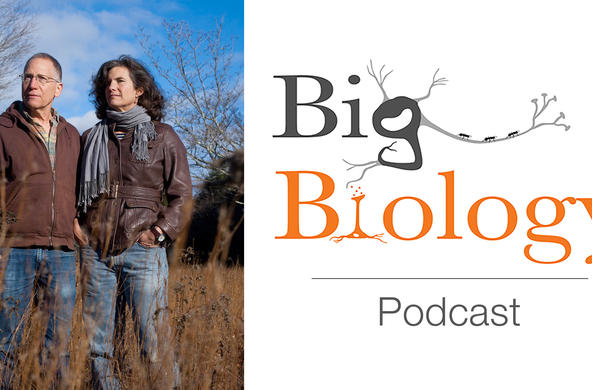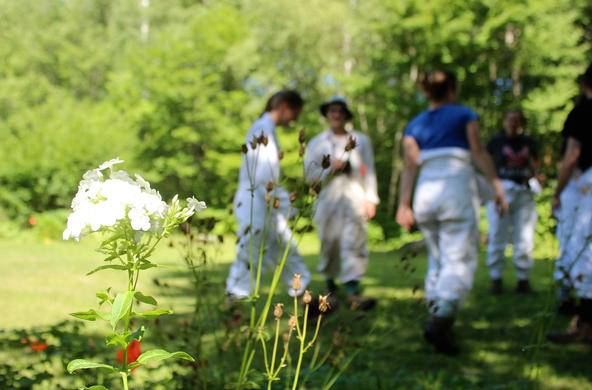For more than 25 years, we’ve been working to understand how ecological conditions shape tick-borne disease risk.
Our Millbrook, NY campus sits at an epicenter for tick-borne disease. Since the early 1990s, we’ve been keeping a pulse on how forest ecology shapes the number of blacklegged ticks infected with the pathogens that cause Lyme and other tickborne diseases. Our goal: to understand the Lyme disease system well enough to predict and prevent human illness.
Through long-term data, we are unraveling how forest fragmentation, animal biodiversity, acorns, and climate influence the presence of infected blacklegged ticks. Findings can help predict areas at risk and inform management interventions.
The problem
- Lyme disease is the most common vector-borne illness in the US, with an estimated 420,000 people infected each year.
- Estimated cost of illness: $712 million - $1.3 billion dollars annually
- There is no vaccine for Lyme disease or the other infections spread by blacklegged ticks.
- Prevention requires reducing our exposure to ticks and the pathogens they carry.
We lead one of the nation’s longest-running study on the ecology of tick-borne disease. Our work explores the web of players and environmental conditions that set the stage for risk, with the goal of guiding targeted interventions.
We are exploring...
- How forest fragmentation and biodiversity shape tick-borne disease risk.
- The biological attributes that make white-footed mice disease amplifiers.
- How acorns crops foreshadow Lyme disease risk.
- The range of pathogens, in additional to Lyme, being spread by blacklegged ticks.
Our discoveries
Rodents play an outsized role in amplifying tick-borne disease risk.
When blacklegged ticks feed on white-footed mice and chipmunks, they are much more likely to survive and become infected with the pathogens that cause Lyme disease, anaplasmosis, and babesiosis. Ticks are born free of these pathogens. Once ticks become infected, their bites go from being a nuisance to being a public health threat.
“It’s not uncommon to see mice with fifty feeding ticks attached. They can carry huge tick burdens without having their fitness compromised. This is bad news for us, because these rodents are also very efficient at harboring and transferring pathogens to feeding ticks.” – Rick Ostfeld
Fast fact: Blacklegged ticks take just a single blood meal at each of their three life stages: larva, nymph, and adult. Infected nymphs pose the most risk to people; they are the size of a poppy seed and are difficult to detect. Nymphs are abundant from May – July.
In the Hudson Valley, people who get bitten by a blacklegged tick have a higher chance of being exposed to multiple pathogens at once than people bitten in other regions.
Health care providers and the public need to be aware that a single tick bite can infect a person with Lyme disease, babesiosis, and anaplasmosis.
Biodiversity is good for our health.
When the landscape is home to a diversity of mammals, tick-borne disease risk decreases. Non-mouse neighbors are less likely to infect ticks with disease-causing pathogens, while predators like foxes and bobcats keep mouse populations in check. Also, some animals are very efficient at killing ticks.
“Opossums are excellent groomers. They kill more than 90% of the ticks that try to feed on them. We estimate opossums are eliminating thousands of ticks each week during tick season – and providing a real public health benefit.” – Rick Ostfeld
Forest fragments have a higher percentage of infected ticks compared to intact forests.
This is because forest patches have lower animal diversity, fewer predators, and an abundance of white-footed mice.
Notice a lot of acorns on the forest floor? This is a good indicator of future Lyme risk. When oaks produce heavy acorn crops, more mice survive over the winter. The following spring, larval ticks are more likely to feed on an infected mouse, creating the next crop of pathogen-infected nymphal ticks.




